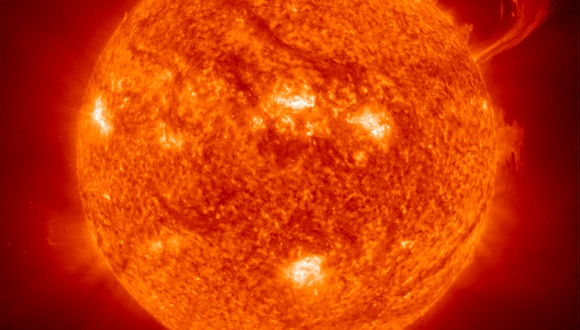Another Maunder Minimum

http://techland.time.com/2011/06/15/claim-sunspots-to-disappear-global-cooling-may-ensue/
Claim: Sunspots to Disappear, Global Cooling May Ensue
You know what they say about a leopard not changing its spots, but when it comes to our sun, change is all but guaranteed. In fact new research suggests the sun may be on the verge of changing its sunspots in a way that could significantly alter weather patterns for the long haul, both on Earth and in space.
Three studies presented by scientists at a conference in Las Cruces, New Mexico yesterday predict that sunspots are set to temporarily and unexpectedly vanish in coming years as part of a solar “hibernation” period that could last for decades.
The consequences for us? Possibly global cooling, for starters—a byproduct of an extended period of “solar minimum,” in which sunspot and solar flare activity would be diminished. The sun usually runs through an 11-year cycle during which sunspot activity waxes and wanes. The last solar “maximum”—the point at which upwards of hundreds of sunspots may be active on the sun’s surface—was back in 2000. The current peak is expected in early 2013, and it may be one of the weakest since 1928, though we’re kind of bad at predicting these things: NASA had previously suggested the cycle would peak between 2010 and 2012 and that it would be “the most intense solar maximum in fifty years.”
The same approach employed to determine that year or two delay in solar maximum—an approach dubbed “helioseismology” that studies seismic wave activity on the sun—now suggests the sun is entering a relatively quiet period, prompting weaker future solar cycles.
(More on TIME.com: Amazing Photos of the Sun)
So are we headed for another “little ice age,” like the exceptionally cool period that occurred between 1645–1715, known as the Maunder Minimum, when astronomers reportedly observed little to no sunspot activity? Probably not, though according to Tom Woods, associate director of the Laboratory for Atmospheric and Space Physics at the University of Colorado, the shift in solar activity could alter warming predictions by climate scientists.
While it’s not a flat out reprieve from human-effected climate change, it may turn out to be an unexpected mitigating factor. No one’s yet talking climate impact specifics, but assuming the change is notable enough to impact climate models, here’s the other thing to chew on: If a gentler sun reduces climate model heating trends, prompting us to relax our efforts to offset our role in warming the planet, what does it bode for climate models when the sun inevitably blazes back?
[UPDATE: New Scientist has a piece up suggesting the cooling effect of a solar minimum that started now and ran all the way to 2100 would be as little as 0.3 degrees Celsius, and that’s at most. That’s still technically a global cooling effect, but on balance, New Scientist says one that’s hardly enough to compensate for the predicted greenhouse-gas-led warming trend of 2 to 4.5 degrees Celsius between now and the century’s end.]
[CLARIFICATION: Some commenters seem to be confused about the terms “global warming” and “global cooling.” As I’m using them, they refer to the forces impacting the overall temperature of the Earth’s atmosphere. A less active sun may have a “global cooling” effect on the planet. That doesn’t mean the impact of greenhouse gases or the average overall thermal trend are offset. In fact it has nothing to do with offsets or equation balancing. It simply refers to the hypothetical impact of the phenomenon—in this instance, a temporarily less active sun.]
(via Arizona Daily Star)
Read more: http://techland.time.com/2011/06/15/claim-sunspots-to-disappear-global-cooling-may-ensue/#ixzz1lIRzyfS5